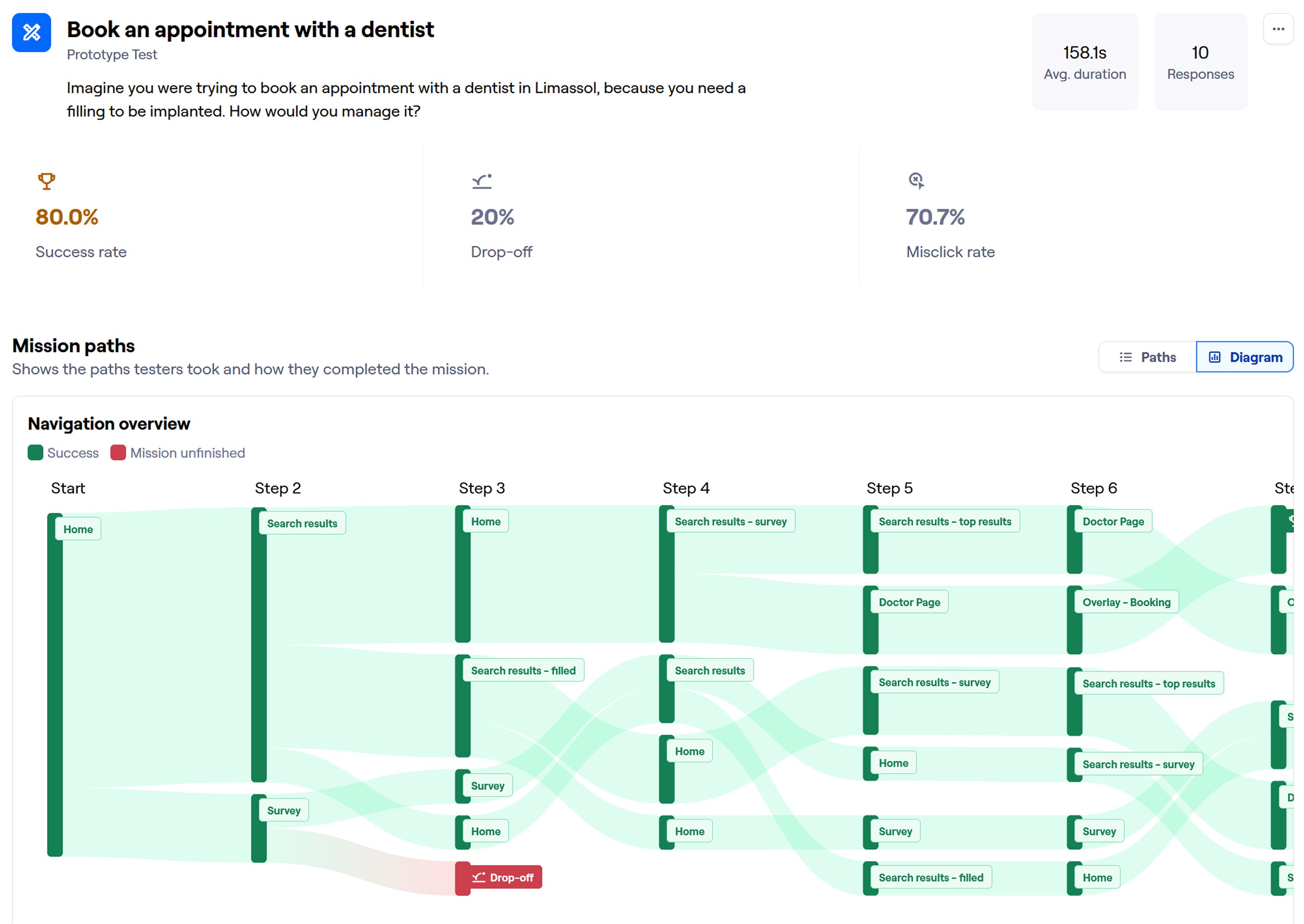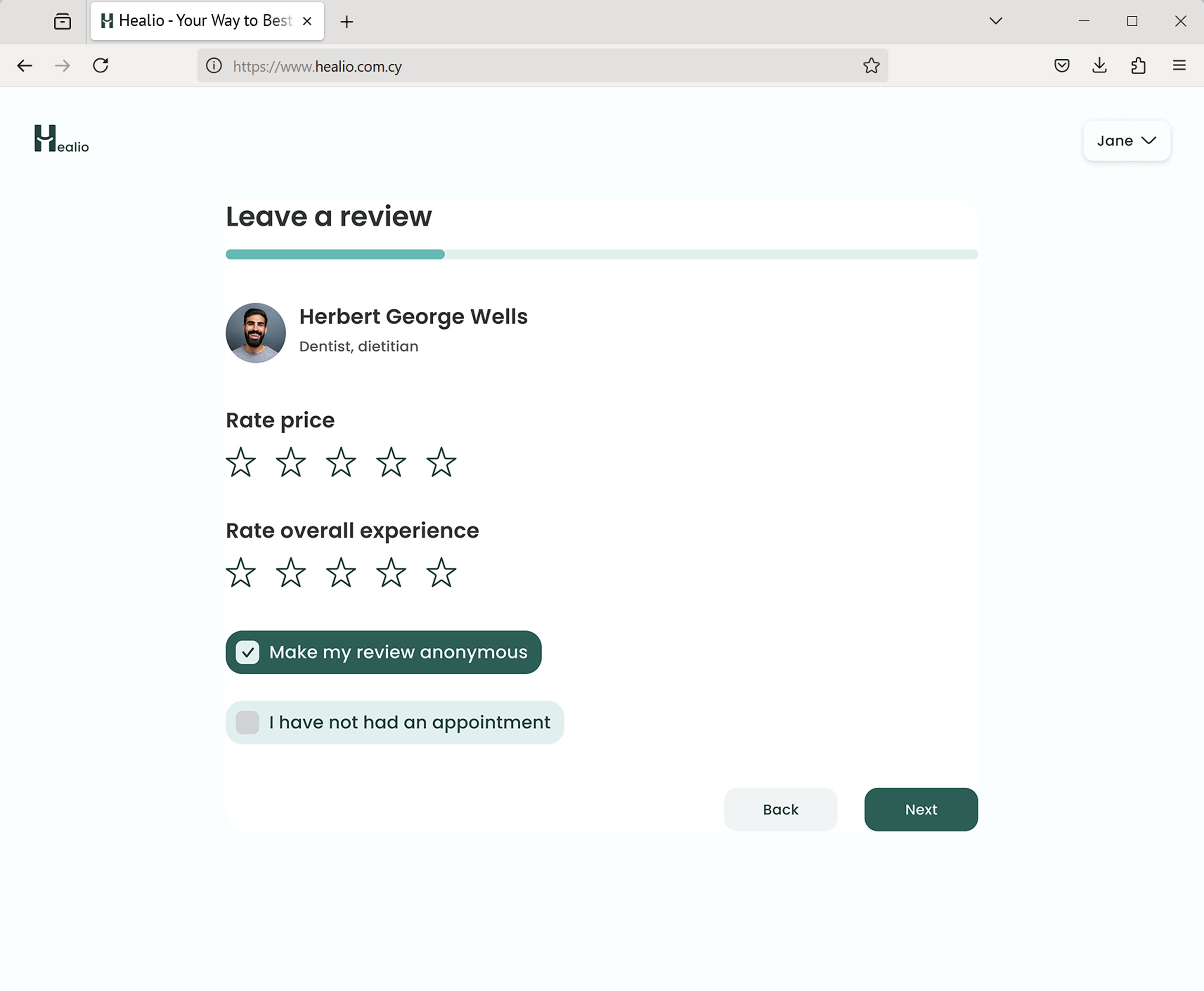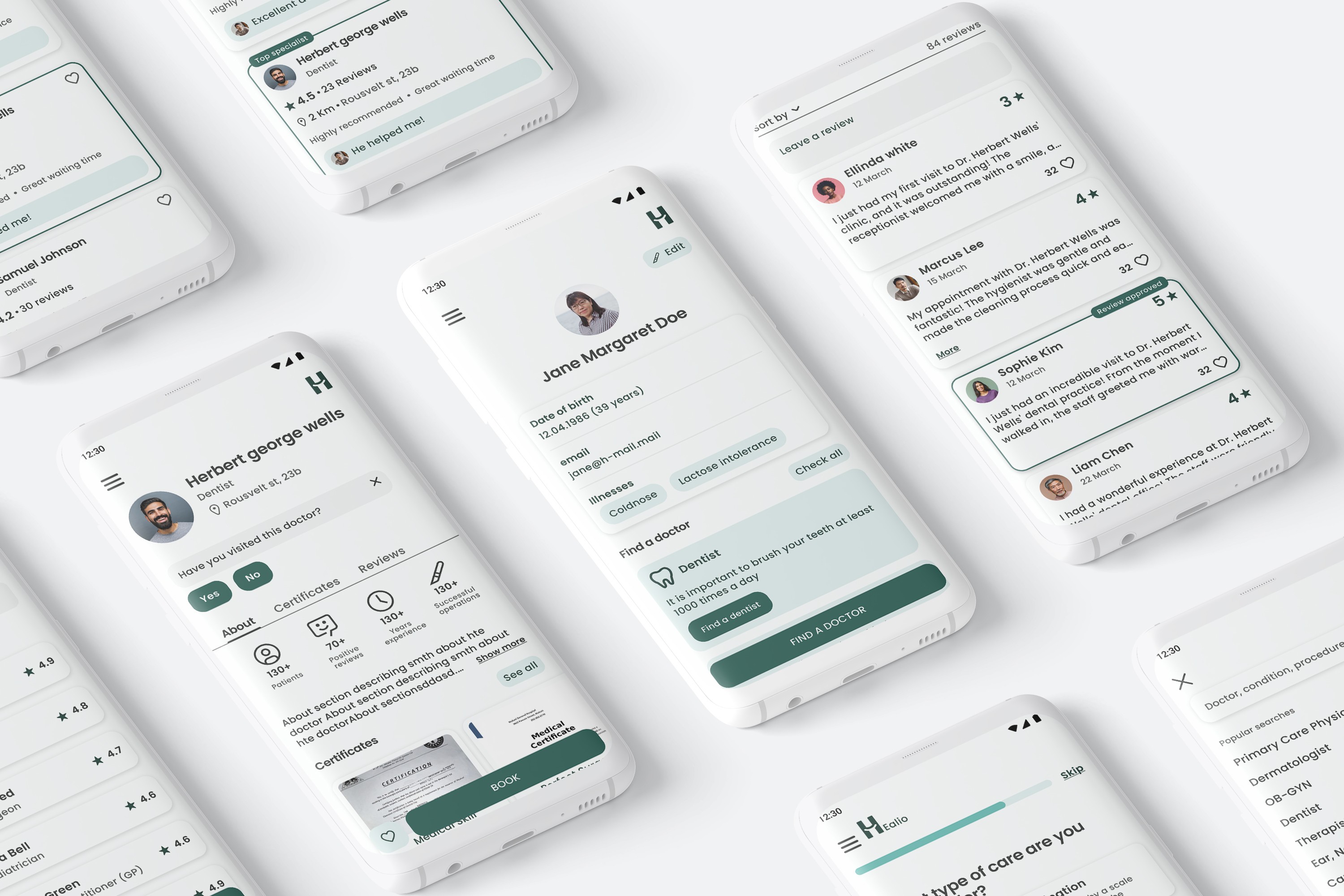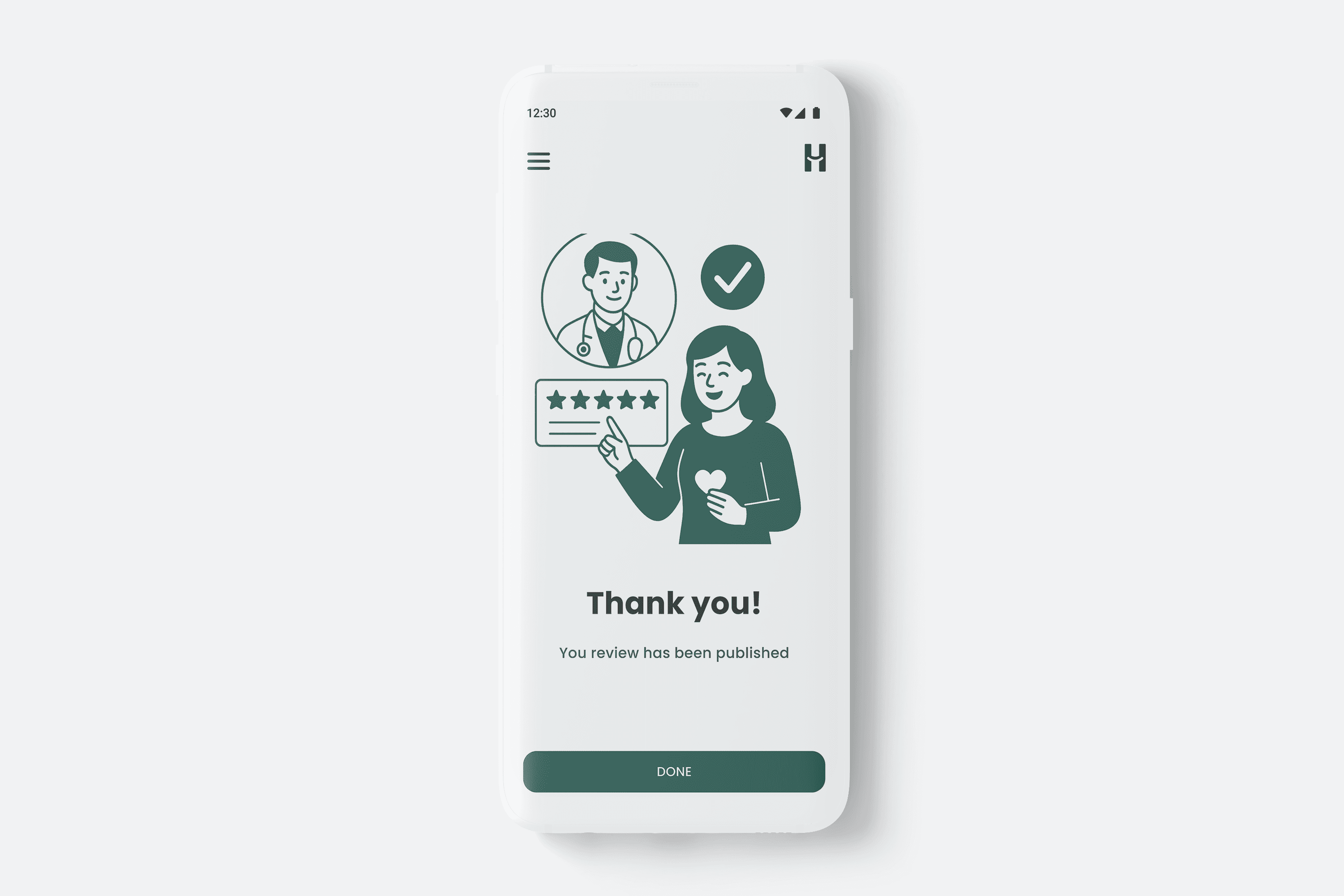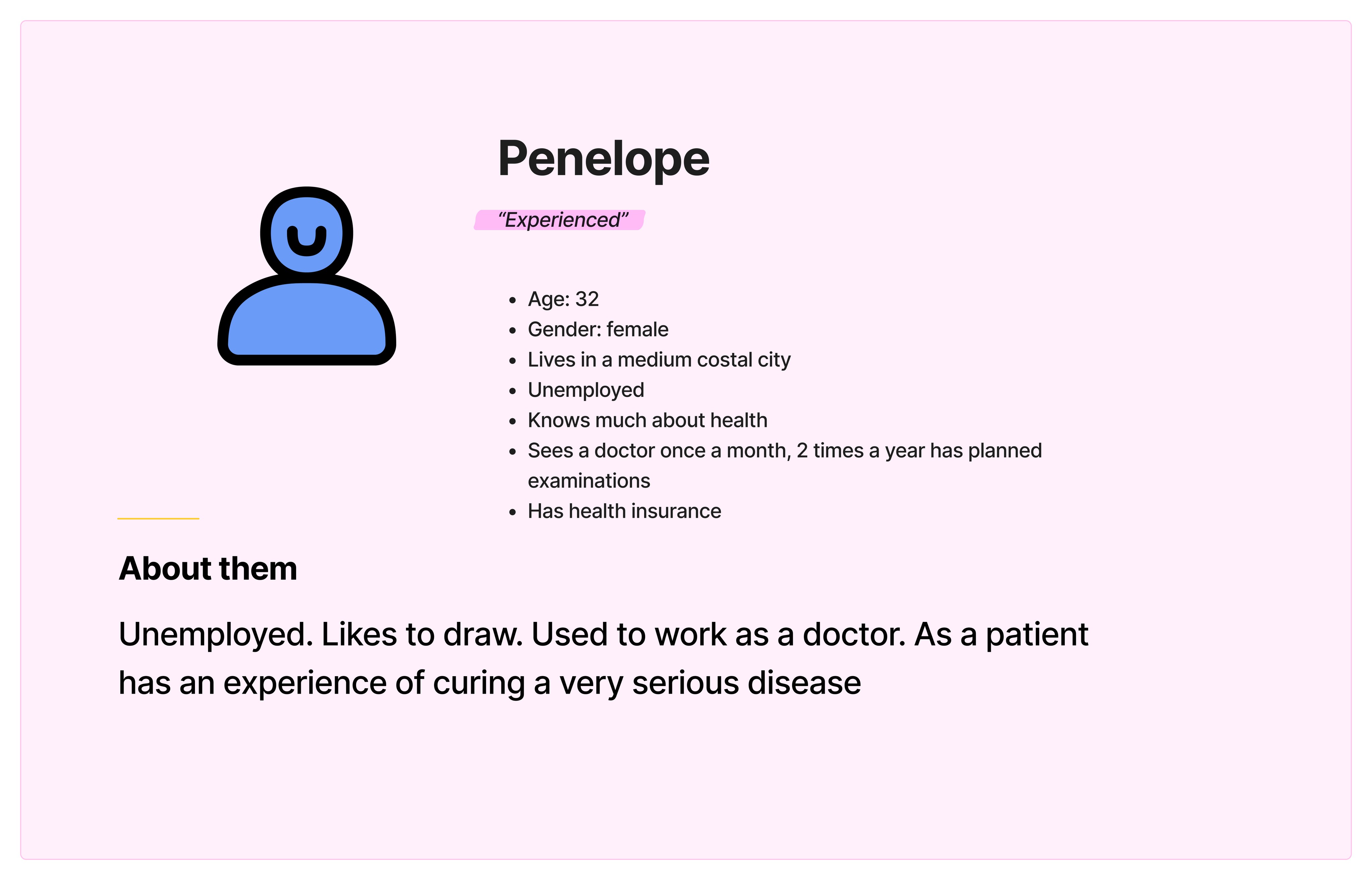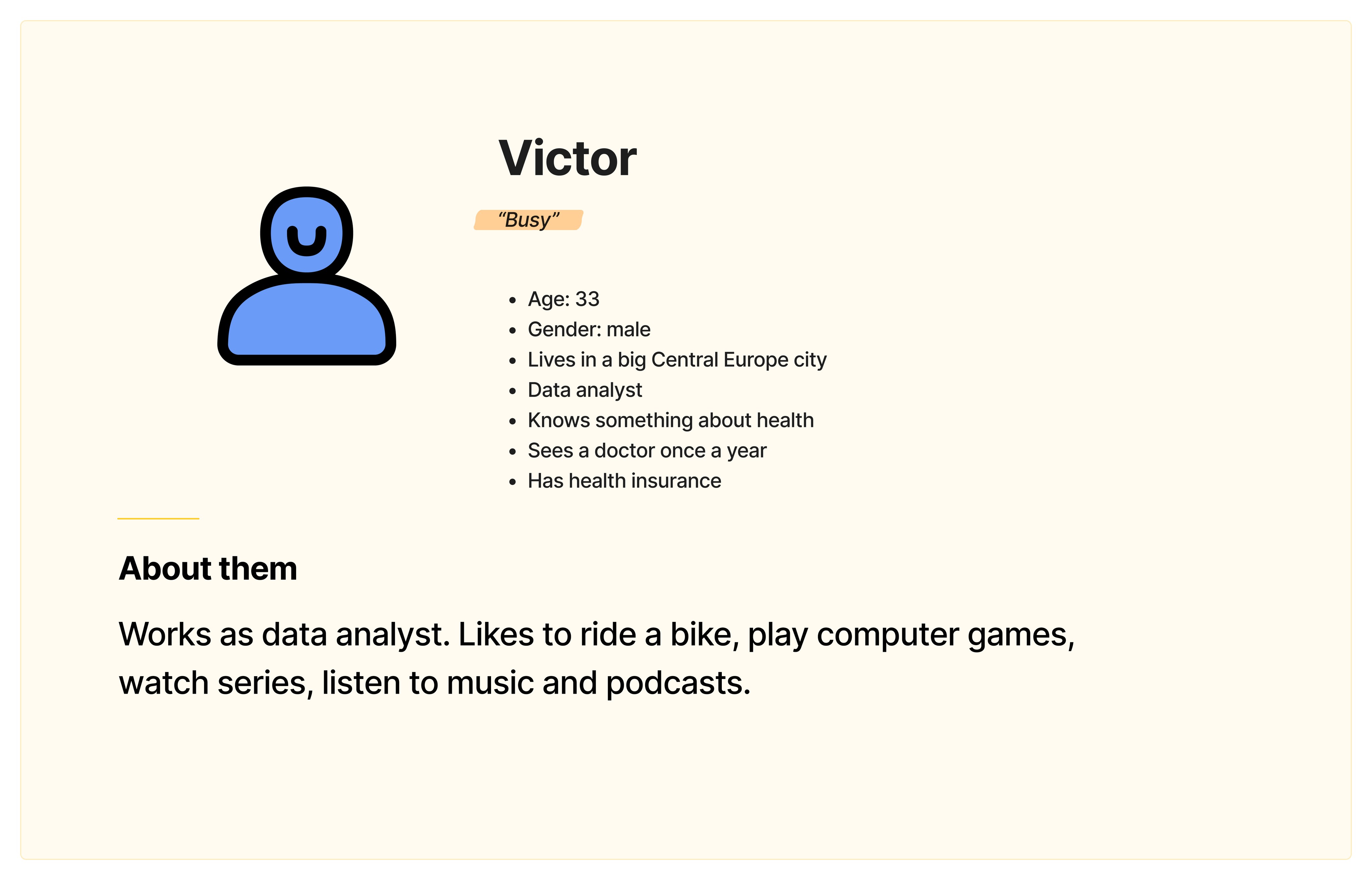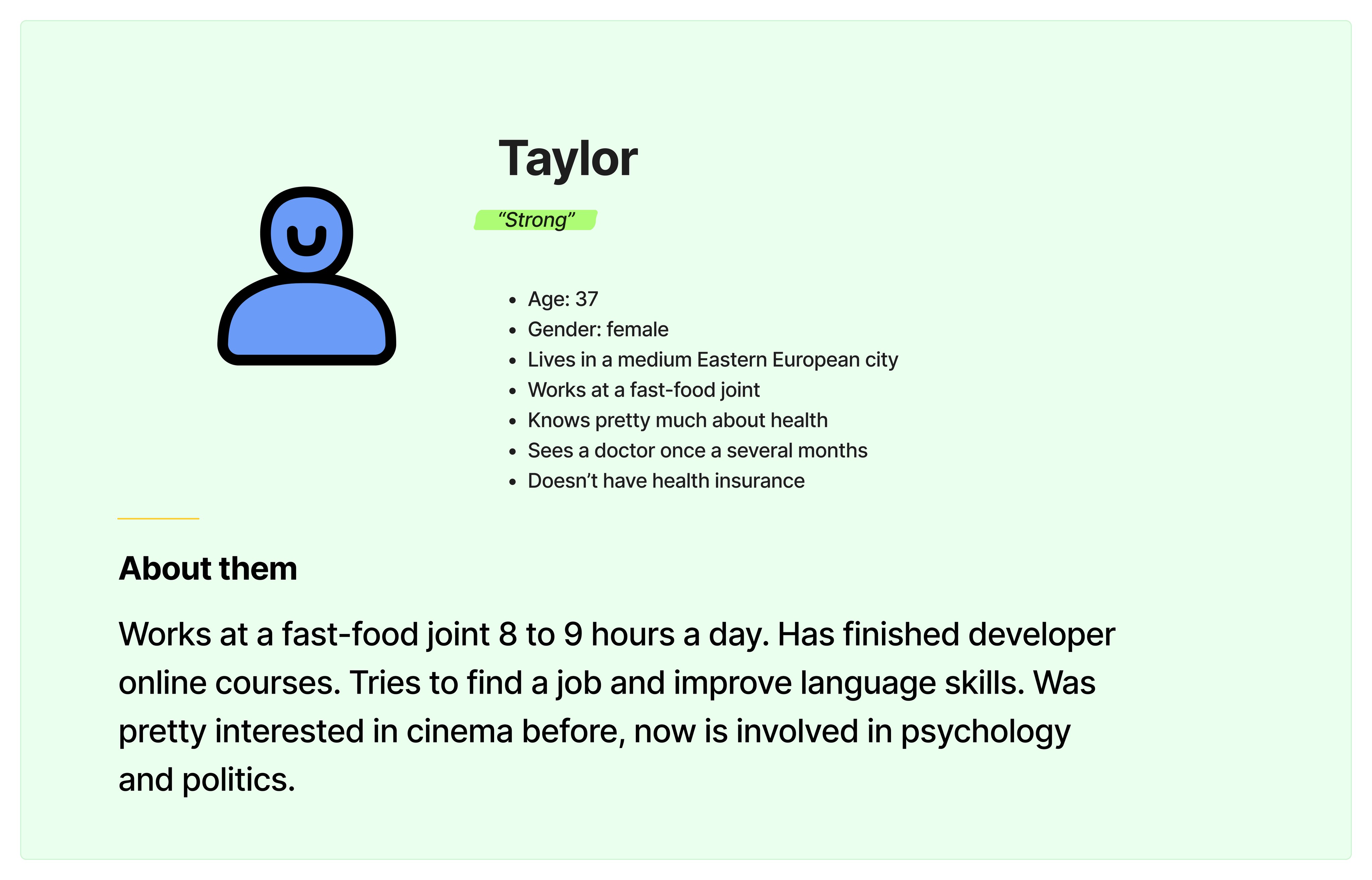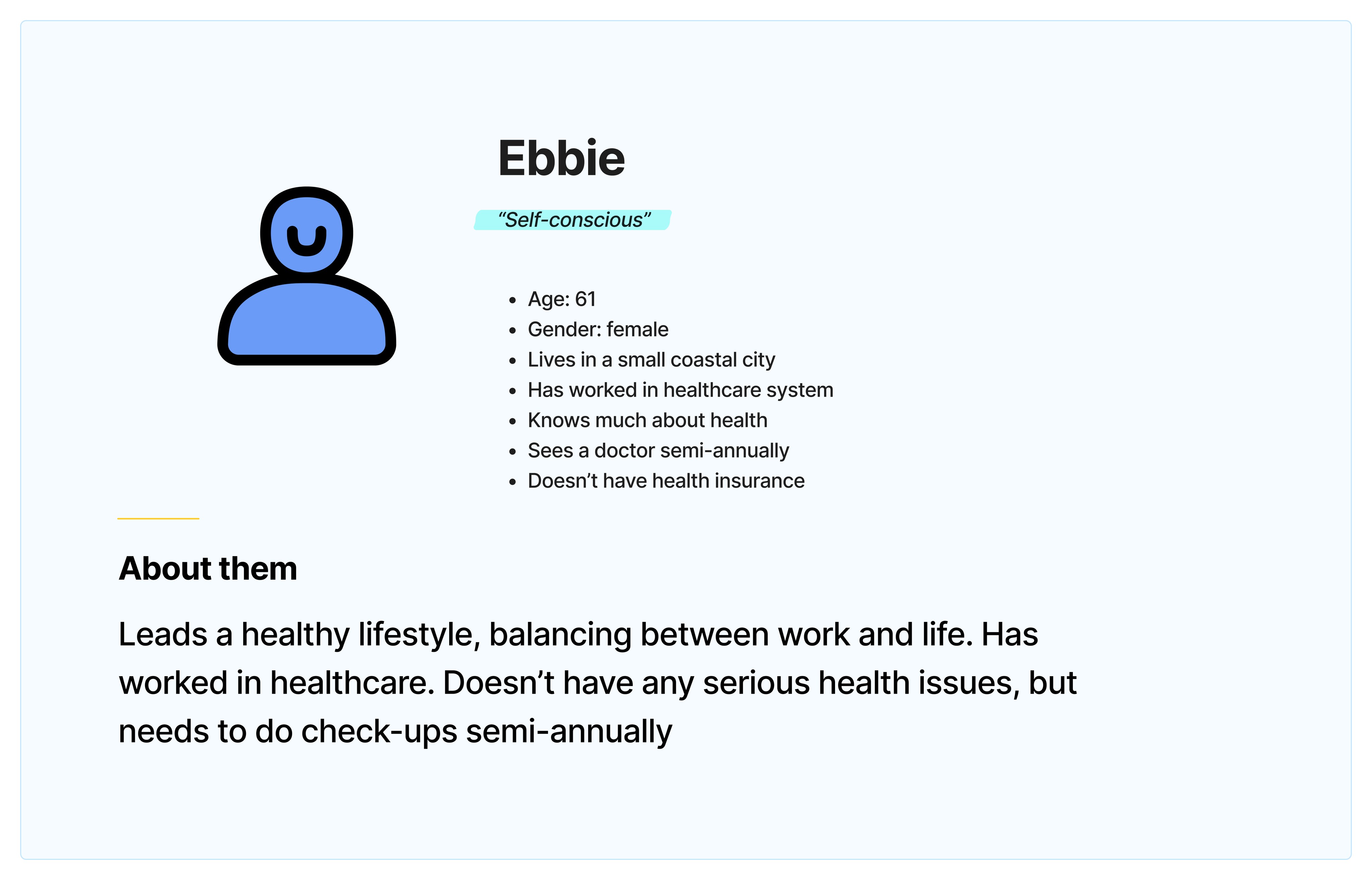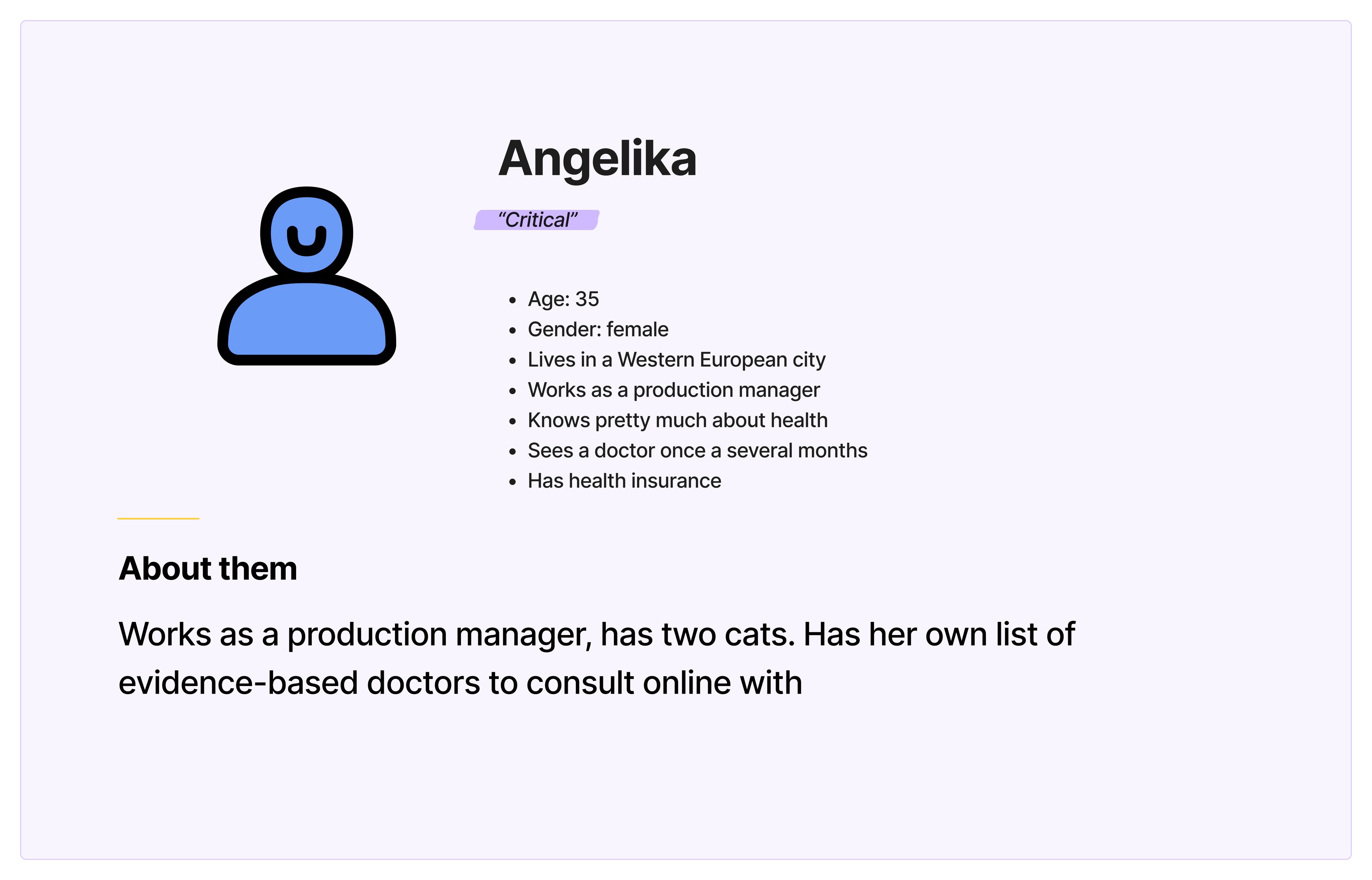
Product Design, UX/UI
Healio
Best doctors for you
Best doctors for you
Goal
To help people with finding a perfect doctor for them based on other people’s reviews
To help people with finding a perfect doctor for them based on other people’s reviews
Duration
14 weeks
Design
UX/UI Design
Graphic Design
Research
Product Design
How it started
Background
Background
Choosing the right doctor is a critical decision, but many people struggle to do so with confidence. While online reviews exist, they often feel unreliable or generic, making it hard to trust them — especially when health is on the line.
The problem gets worse in unfamiliar situations, like moving to a new city or needing a specialist for the first time. Without trusted recommendations, people feel lost. That’s why it’s important to create a way that helps users find the right doctor through trustworthy, relevant experiences from others like them.
Choosing the right doctor is a critical decision, but many people struggle to do so with confidence. While online reviews exist, they often feel unreliable or generic, making it hard to trust them — especially when health is on the line.
The problem gets worse in unfamiliar situations, like moving to a new city or needing a specialist for the first time. Without trusted recommendations, people feel lost. That’s why it’s important to create a way that helps users find the right doctor through trustworthy, relevant experiences from others like them.
People often struggle to find a doctor who truly fits their unique needs — whether those are medical, personal, or situational.
Beyond basic qualifications, patients look for someone they can trust, feel comfortable with, and relate to. However, current solutions rarely support this level of personalized decision-making, leaving many to rely on guesswork or incomplete information.
People often struggle to find a doctor who truly fits their unique needs — whether those are medical, personal, or situational.
Beyond basic qualifications, patients look for someone they can trust, feel comfortable with, and relate to. However, current solutions rarely support this level of personalized decision-making, leaving many to rely on guesswork or incomplete information.
Problem
People struggle with finding a doctor who’d fulfil their needs whatever they are
People struggle with finding a doctor who’d fulfil their needs whatever they are
The platform focuses on usability and personalization, allowing users to search, filter, and compare doctors based on detailed peer reviews. It also empowers users to share their own experiences, creating a trustworthy and growing network of patient-driven insights. By putting real stories and needs at the center, the app makes the process of finding the right doctor simpler, faster, and more human.
Solution
Mobile-first web app which help users find doctors for their needs and leave reviews on them
How can we help people?
Research
Research
To better understand the problem, I conducted user research focused on hearing real stories from real people. I wanted to go beyond assumptions and uncover the actual challenges individuals face when trying to find a doctor. Through interviews and conversations, I gathered insights into their frustrations, fears, and decision-making processes. This helped me define a solution grounded in real needs — not just what seems logical, but what truly resonates with users.
To better understand the problem, I conducted user research focused on hearing real stories from real people. I wanted to go beyond assumptions and uncover the actual challenges individuals face when trying to find a doctor. Through interviews and conversations, I gathered insights into their frustrations, fears, and decision-making processes. This helped me define a solution grounded in real needs — not just what seems logical, but what truly resonates with users.
Methodologies
Competitive analysis
Competitive analysis
Secondary research
Secondary research
User interviews
User interviews
Competitive Analysis
A competitive analysis was conducted to examine how similar platforms address the problem of doctor discovery. Key features across competitors were mapped in a comparison table to identify common patterns and gaps. Noteworthy features with potential for future implementation were visually highlighted, providing a clear reference for future design opportunities and differentiation.
A competitive analysis was conducted to examine how similar platforms address the problem of doctor discovery. Key features across competitors were mapped in a comparison table to identify common patterns and gaps. Noteworthy features with potential for future implementation were visually highlighted, providing a clear reference for future design opportunities and differentiation.
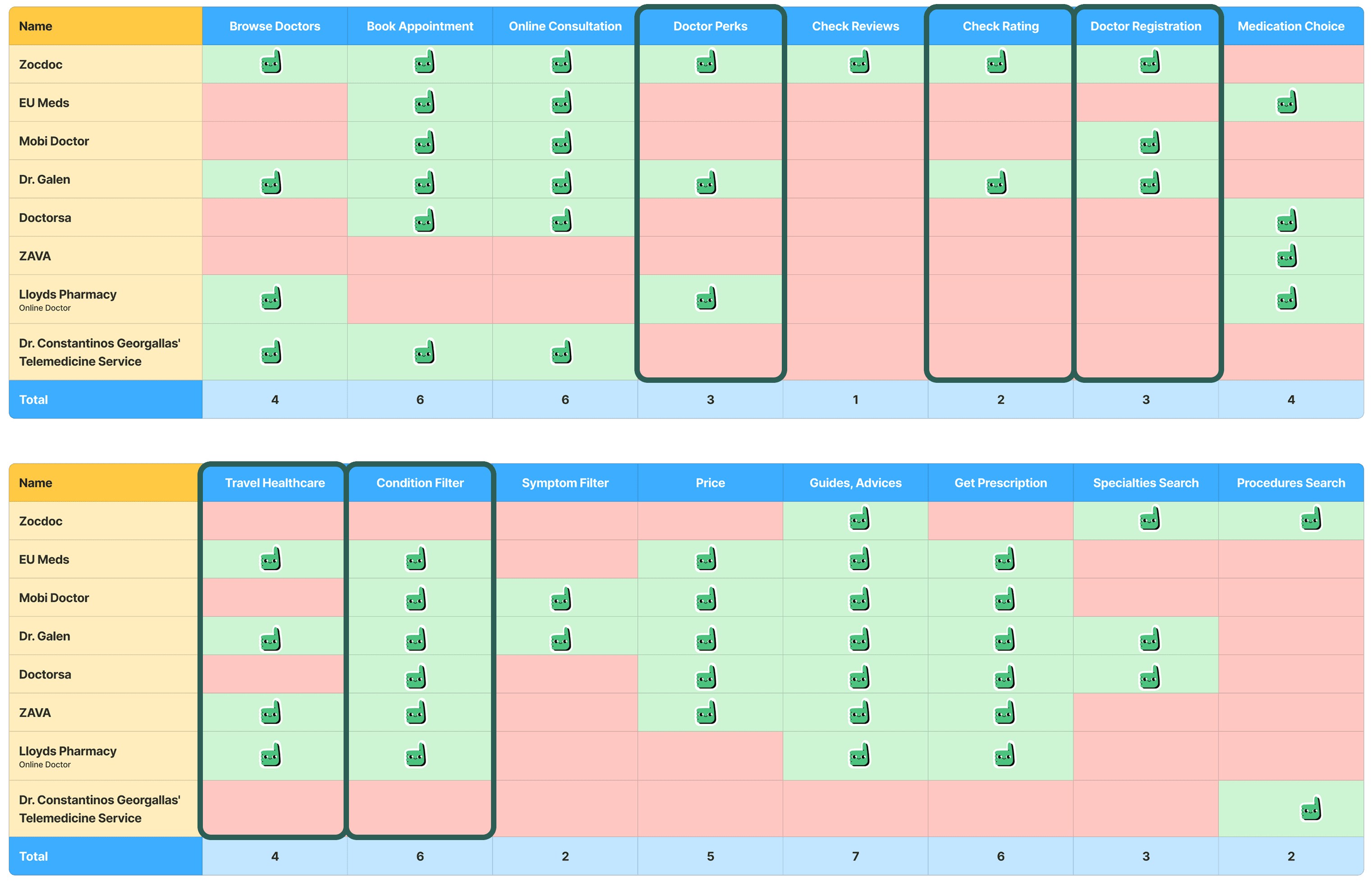

Secondary Research
• Most of similar products are too complicated
• Filtration systems are bad
• Cognitive load is too intense
• Most of similar products are too complicated
• Filtration systems are bad
• Cognitive load is too intense
User Interviews
User interviews were carried out to gather firsthand insights into the challenges people face when looking for a doctor. Patterns and recurring pain points emerged across conversations, helping shape a clearer understanding of user needs. These insights directly informed the concept of the app and guided the definition of its core features as well as to formulate the personas.
User interviews were carried out to gather firsthand insights into the challenges people face when looking for a doctor. Patterns and recurring pain points emerged across conversations, helping shape a clearer understanding of user needs. These insights directly informed the concept of the app and guided the definition of its core features as well as to formulate the personas.
Results
Goals and Needs
• Get information about doctor easy and fast
• Book an appointment ASAP
• Find a good specialist
• Get information about doctor easy and fast
• Book an appointment ASAP
• Find a good specialist
Pain points
• Useless online reviews
• Language barrier with a doctor
• Too long waiting for appointment
• Useless online reviews
• Language barrier with a doctor
• Too long waiting for appointment


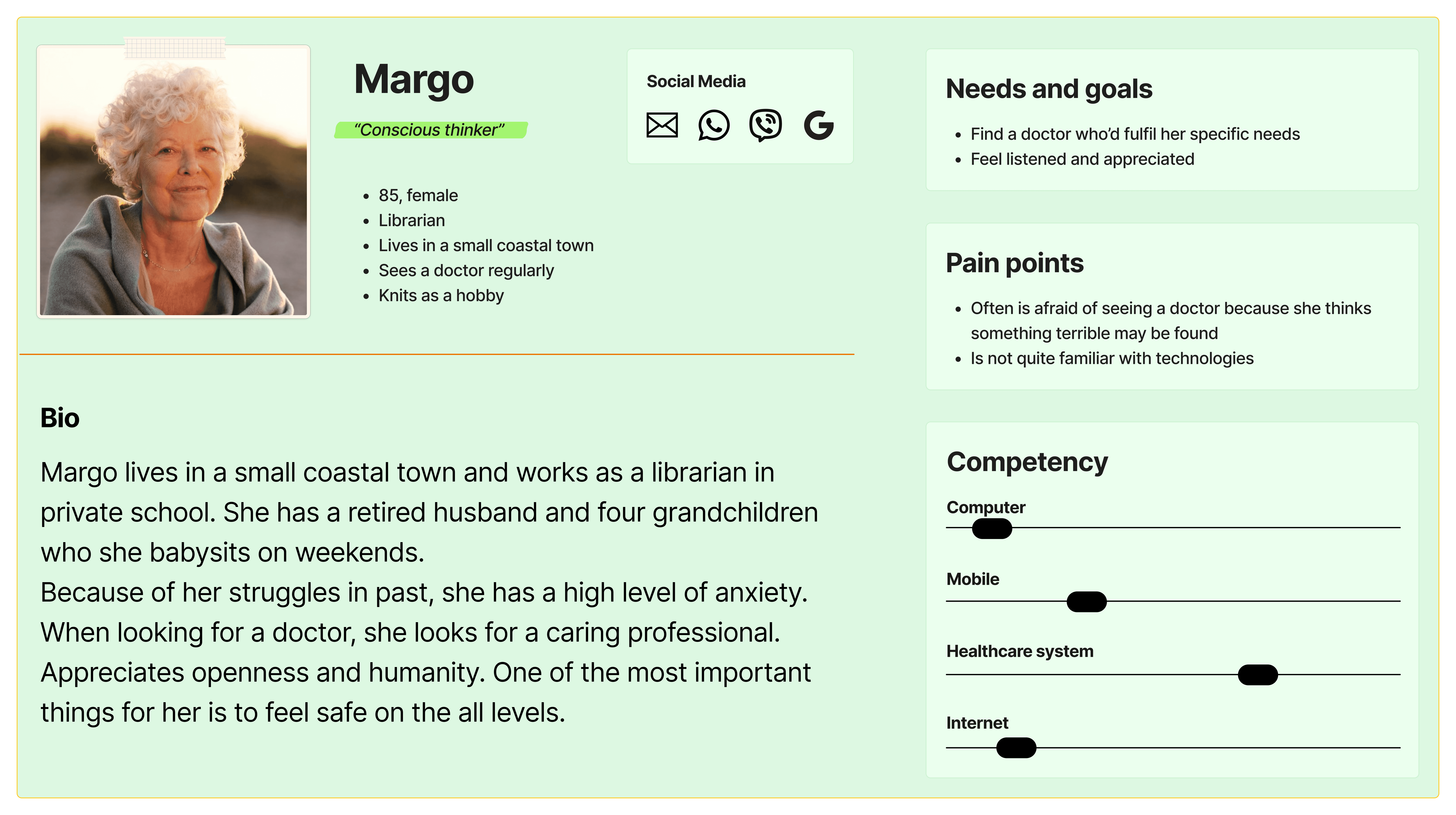



Who are we designing for?
Personas
Personas
Personas were created based on patterns identified in the user interview outcomes. Since some respondents had experience working as doctors, one persona was shaped around a doctor seeking to attract more clients through the platform. Another persona emerged from a recurring theme: many users struggle to find time to search for doctors or book appointments — highlighting the need for a quick, efficient experience. The third persona represents users who aren’t very tech-savvy, serving as a reminder to prioritize accessibility and simplicity throughout the design.
Personas were created based on patterns identified in the user interview outcomes. Since some respondents had experience working as doctors, one persona was shaped around a doctor seeking to attract more clients through the platform. Another persona emerged from a recurring theme: many users struggle to find time to search for doctors or book appointments — highlighting the need for a quick, efficient experience. The third persona represents users who aren’t very tech-savvy, serving as a reminder to prioritize accessibility and simplicity throughout the design.
What is the main point?
Define
Define
A common thread across all user interviews was a deep mistrust of online reviews — many respondents felt they were unreliable, vague, or even manipulated. This insight became a central focus of the project. As a result, the service was designed to create a space where users can trust what others share — by emphasizing authenticity, context, and relatable experiences over generic ratings.
A common thread across all user interviews was a deep mistrust of online reviews — many respondents felt they were unreliable, vague, or even manipulated. This insight became a central focus of the project. As a result, the service was designed to create a space where users can trust what others share — by emphasizing authenticity, context, and relatable experiences over generic ratings.
Storyboarding
Following a brainstorming session, two key ideas were discussed with the team, both aimed at making the review process more transparent, user-friendly, and trustworthy. The focus was on how to encourage users to leave honest, meaningful feedback, and how to present reviews in a way that feels clear, relatable, and credible — ultimately helping others make confident, informed decisions.
Following a brainstorming session, two key ideas were discussed with the team, both aimed at making the review process more transparent, user-friendly, and trustworthy. The focus was on how to encourage users to leave honest, meaningful feedback, and how to present reviews in a way that feels clear, relatable, and credible — ultimately helping others make confident, informed decisions.
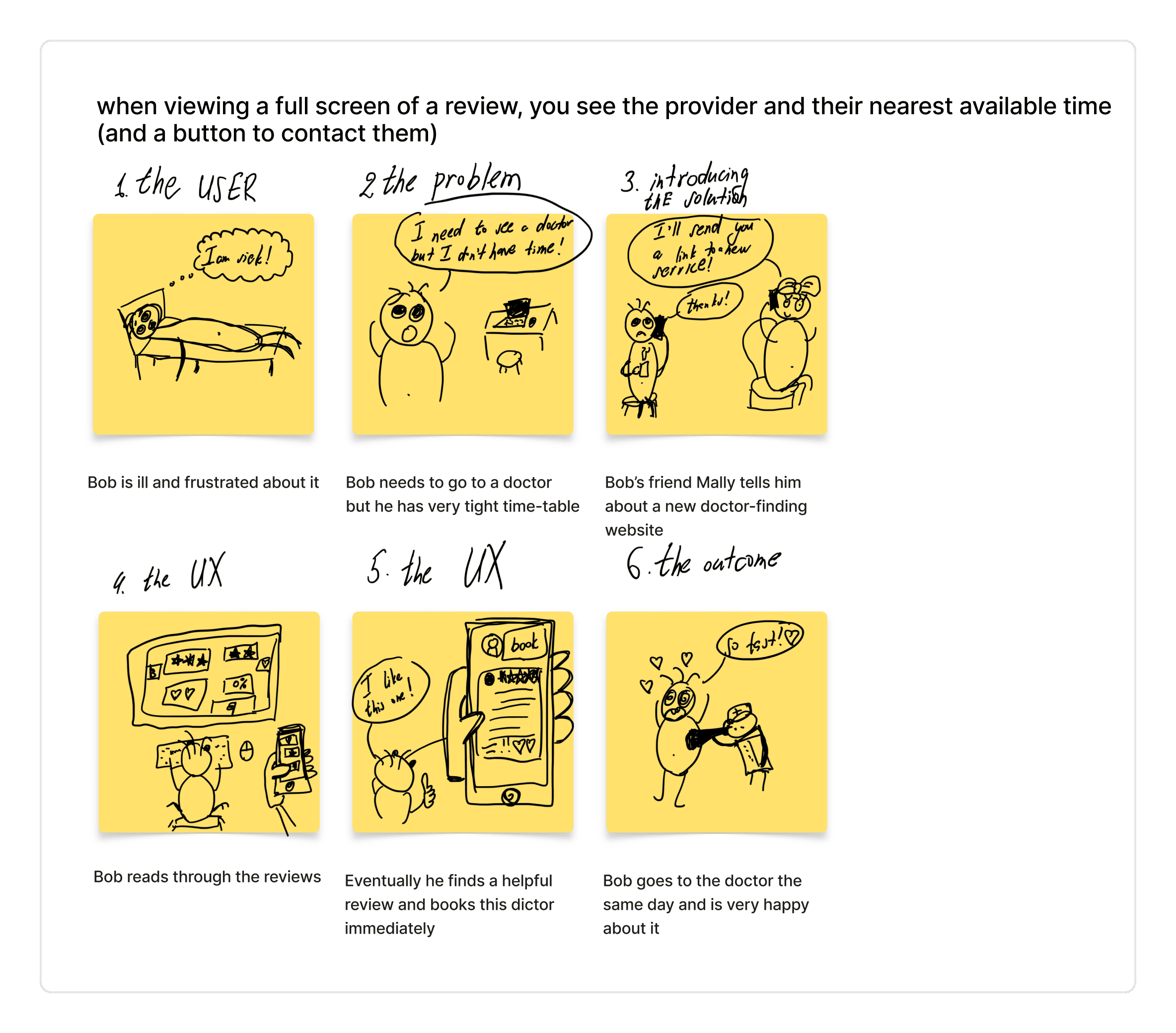

See nearest available booking time even while browsing through long review
See nearest available booking time even while browsing through long review
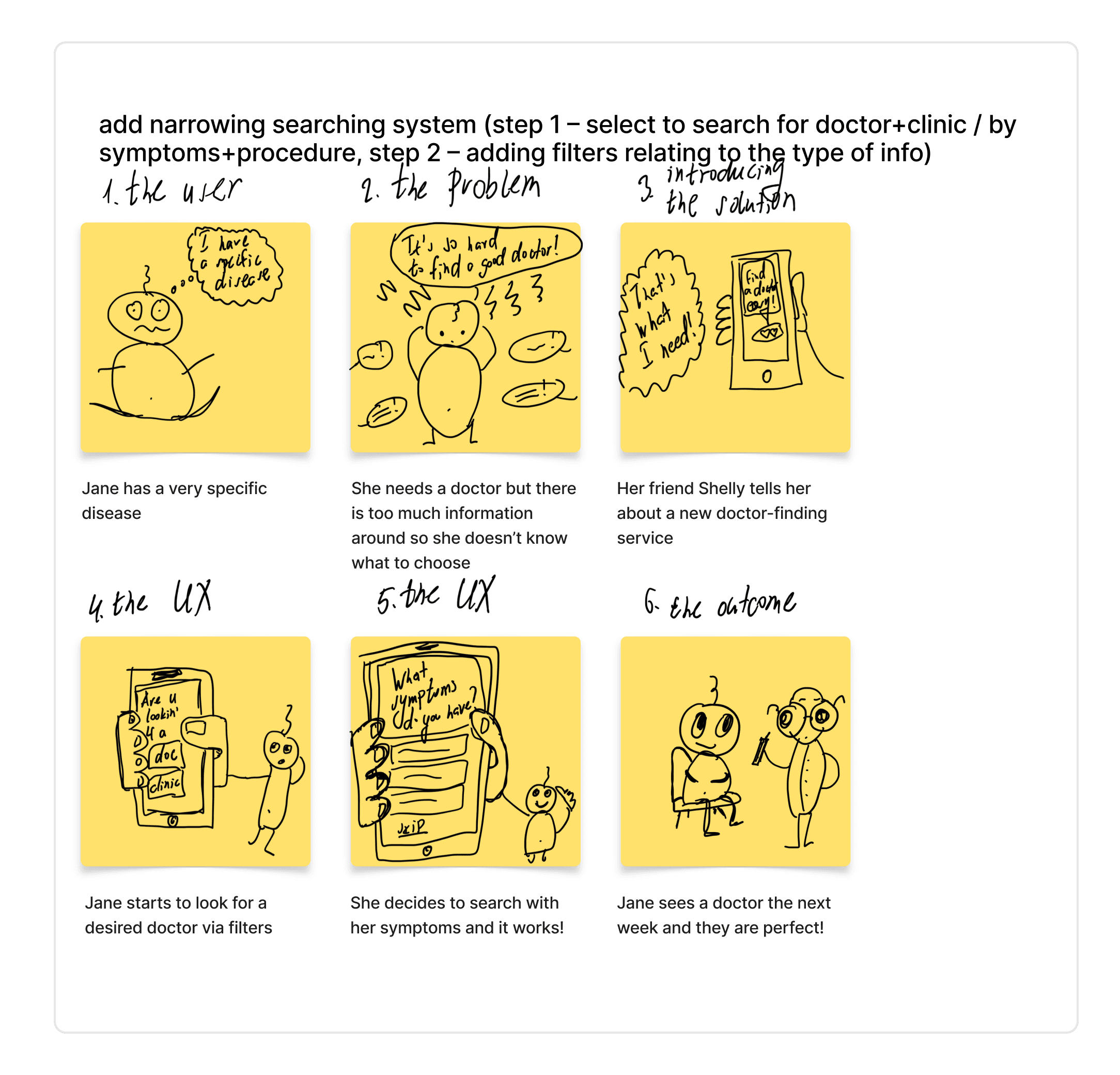

Smart searching system for best client-oriented results
Smart searching system for best client-oriented results
What's the plan?
Sitemap
Sitemap
Based on in-depth research, a sitemap was created to illustrate the core structure and logic of the website. It served as a clear visual tool to communicate the main idea to stakeholders, align on key sections and user journeys, and open up discussion around next steps in the design and development process.
Based on in-depth research, a sitemap was created to illustrate the core structure and logic of the website. It served as a clear visual tool to communicate the main idea to stakeholders, align on key sections and user journeys, and open up discussion around next steps in the design and development process.
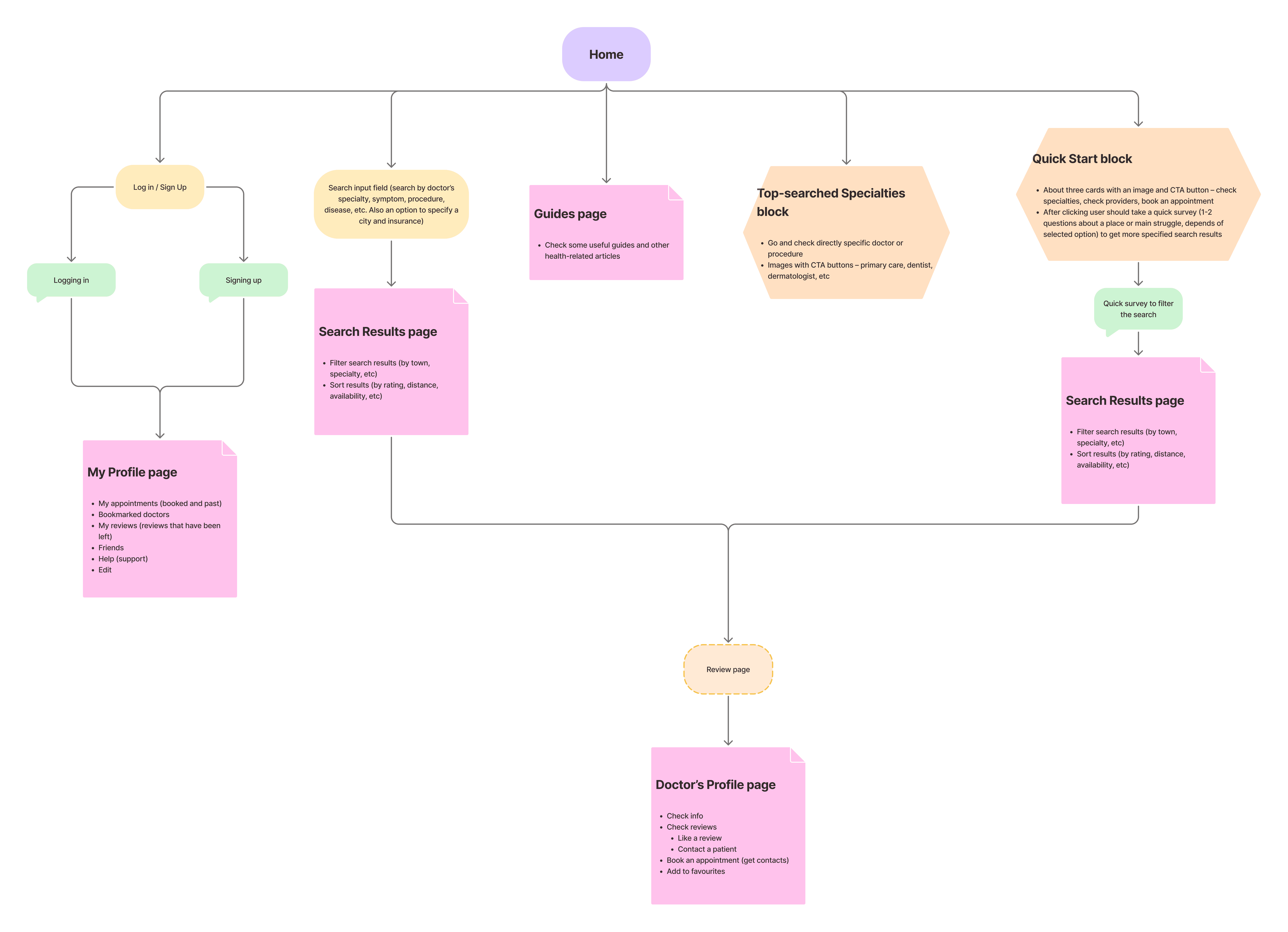
How to reach the goal?
Flows
Flows
User and task flows were developed based on common behaviour patterns identified through interviews and additional research. These flows reflect typical user goals and actions within the similar services, helping to define a smooth and intuitive experience. They later served as the foundation for usability testing, allowing for validation and refinement of key interactions early in the design process.
User and task flows were developed based on common behaviour patterns identified through interviews and additional research. These flows reflect typical user goals and actions within the similar services, helping to define a smooth and intuitive experience. They later served as the foundation for usability testing, allowing for validation and refinement of key interactions early in the design process.
User flows
Booking an appointment
Leaving a review
Task flows
Book a dentist
Leave a review
Create an account
User flows
Booking an appointment
Leaving a review
Task flows
Book a dentist
Leave a review
Create an account
How does it look?
Final Design
Final Design
All prior research and collected data were synthesized and taken into account before moving into the UI design phase. This ensured that every design decision was grounded in real user needs, behavior patterns, and business goals, creating a strong foundation for a user-centered interface.
All prior research and collected data were synthesized and taken into account before moving into the UI design phase. This ensured that every design decision was grounded in real user needs, behavior patterns, and business goals, creating a strong foundation for a user-centered interface.
Overall structure
Wireframes
Wireframes
Book an appointment
Leave a review
Is it easy to use?
Prototype
Prototype
Wireframes were completed and successfully approved by stakeholders, confirming alignment on structure and key features. Preliminary testing was also conducted to validate the feasibility and usability of the proposed solutions, helping to identify early improvements and ensure the design direction met user expectations.
Wireframes were completed and successfully approved by stakeholders, confirming alignment on structure and key features. Preliminary testing was also conducted to validate the feasibility and usability of the proposed solutions, helping to identify early improvements and ensure the design direction met user expectations.
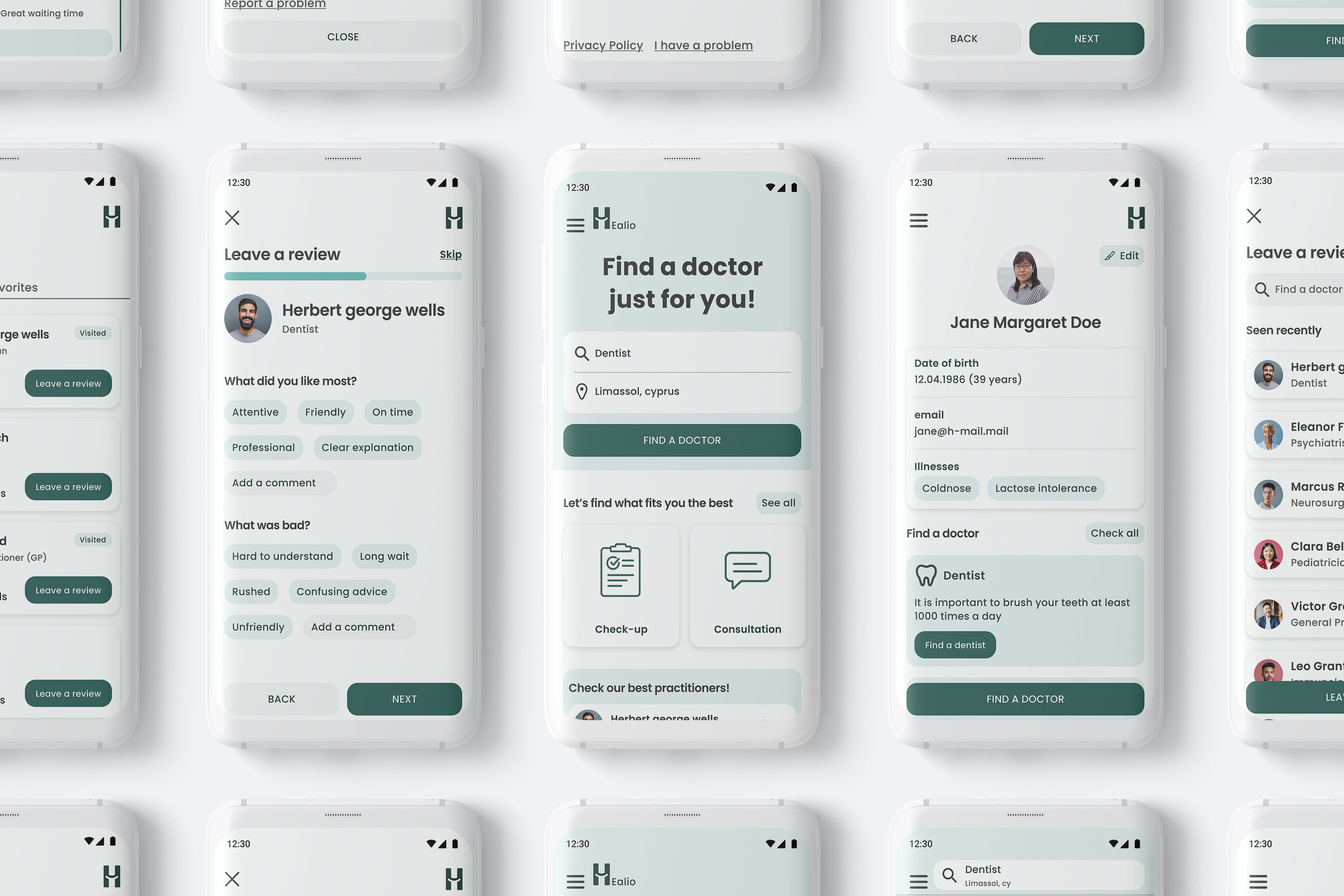
Results
UI
• Focused on accessibility and clarity to ensure usability for all, including less tech-savvy users
• Used calm, non-distracting colours to support a comfortable and focused experience
• Provided clear guidance and help options on every page to support users at each step
• Focused on accessibility and clarity to ensure usability for all, including less tech-savvy users
• Used calm, non-distracting colours to support a comfortable and focused experience
• Provided clear guidance and help options on every page to support users at each step
UX
• Designed user flows to be as short, intuitive, and interruption-free as possible.
• Enabled quick search options for users who want fast results without extra steps
• Included advanced filters and deep search paths for users needing tailored, problem-specific solutions
• Designed user flows to be as short, intuitive, and interruption-free as possible.
• Enabled quick search options for users who want fast results without extra steps
• Included advanced filters and deep search paths for users needing tailored, problem-specific solutions
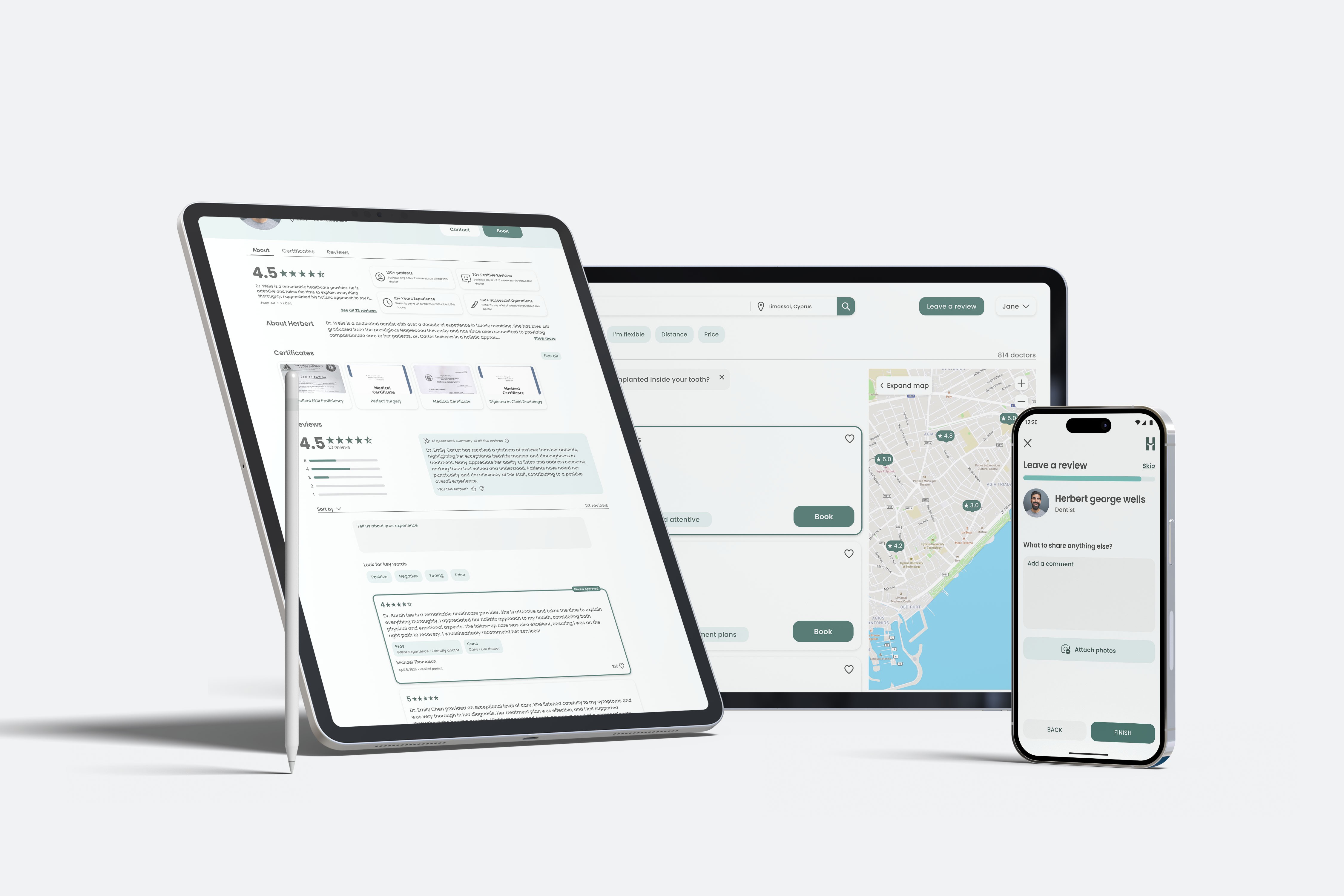
Do people like it?
Usability Test
Usability Test
After creating prototypes, usability testing was conducted with real users. The results confirmed that the flows were clear and easy to follow, and that users were able to complete key tasks without confusion or unnecessary effort. This validated the overall structure and reinforced confidence in the design direction.
After creating prototypes, usability testing was conducted with real users. The results confirmed that the flows were clear and easy to follow, and that users were able to complete key tasks without confusion or unnecessary effort. This validated the overall structure and reinforced confidence in the design direction.
Have you ever looked for a doctor online?
1-5 times
40%
More than 10 times
30%
More 5-10 times
20%
Never
10%
Have you ever looked for a doctor online?
1-5 times
40%
More than 10 times
30%
More 5-10 times
20%
Never
10%
What device do you usually use when looking for anything in web?
Mobile Phone
60%
PC / Desktop
40%
Tablet
0%
Smart Watch
0%
Smart TV
0%
Other
0%
What device do you usually use when looking for anything in web?
Mobile Phone
60%
PC / Desktop
40%
Tablet
0%
Smart Watch
0%
Smart TV
0%
Other
0%
Check broader results
Check broader results
